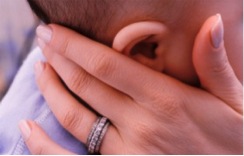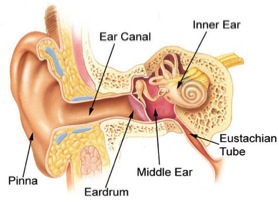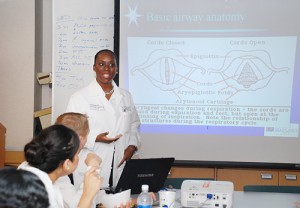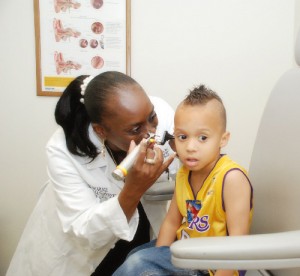- New Sublingual Allergy Tablets - October 31, 2014
- Ground-breaking New Treatment Option for Sleep Apnea - September 27, 2014
- Allergies versus Viruses in Children - September 27, 2014
- “Dog Dust” Protects Children from Allergies - September 27, 2014
- Nasal Saline Irrigation - August 8, 2014
- Doctor, I am Allergic to Dust. What Can I do? - July 31, 2014
- Infants Exposed to Dust Mites Less Likely to Develop Allergies - June 23, 2014
- How to Treat a Young Child’s Cough - December 17, 2013
- Many Parents are Unaware That Their Children Are at Risk for Noise Induced Hearing Loss - December 9, 2013
- Is it a Cold or an Ear Infection? - December 9, 2013
 Question:
Question:
My child is diagnosed with an ear infection every time that I bring her to the pediatrician for a cough or cold. This has happened repeatedly and each time I never noticed any of the typical symptoms of an ear infection? Is it possible that my child has an ear infection every time she gets sick?
Discussion:
Children are frequently brought to the doctor for evaluation of fever, sore throat, runny nose or cough. Most of the time, these symptoms are due to viral infections, which are very common among children who attend daycare or school. When a child has these symptoms, an ear infection diagnosis is often puzzling to parents. Does the ear infection cause the sore throat and runny nose or vice versa?
There is a tube located in the back of the nose, called the Eustachian tube, which essentially connects the nose and the ears. The Eustachian tube is responsible for equalizing the pressure in the middle ear. Most people are aware of this on airplane flights, when their “ears pop.” This is the Eustachian tube opening up to allow air to travel between the nose and the ears, equalizing pressure so that there is no injury to the ear’s delicate internal structures.
 When a child gets a “cold” or an upper respiratory infection, it means the nose and throat have been infected by a virus. The illness usually starts with a sore throat followed by congestion and a runny nose. When the nose is infected with a virus, the Eustachian tube becomes inflamed, preventing it from working properly. Dysfunction of the Eustachian tube can lead to negative pressure and fluid build up within the middle ear. This fluid can then become infected with bacteria, causing an ear infection. Ear infections are often treated with antibiotics to prevent complications from the spread of the infection.
When a child gets a “cold” or an upper respiratory infection, it means the nose and throat have been infected by a virus. The illness usually starts with a sore throat followed by congestion and a runny nose. When the nose is infected with a virus, the Eustachian tube becomes inflamed, preventing it from working properly. Dysfunction of the Eustachian tube can lead to negative pressure and fluid build up within the middle ear. This fluid can then become infected with bacteria, causing an ear infection. Ear infections are often treated with antibiotics to prevent complications from the spread of the infection.
In most cases of ear infections due to colds, the fluid in the middle ear resolves on its own. In some cases, the fluid persists, which can eventually cause hearing loss. Unfortunately this pattern commonly recurs with each episode of an upper respiratory infection, causing prolonged periods of hearing loss that may affect speech development. If your child is having recurrent ear infections or persistent ear fluid it is important to have them evaluated by a qualified pediatric otolaryngologist.
Key Points:
- Children are frequently brought in to the doctor’s office for evaluation of cold symptoms. Parents are frequently surprised to find that their child also has an ear infection.
- The nasal cavity and ears are connected by a structure called the Eustachian tube.
- The Eustachian tube is responsible for pressure equalization of the middle ear and serves to drain any fluid that may accumulate in this space.
- When children have an upper respiratory infection, such as a cold virus, their Eustachian tube frequently becomes inflamed and no longer functions correctly.
- Eustachian tube dysfunction frequently leads to fluid and bacterial accumulation within the middle ear.
- Middle ear infections are frequently treated with antibiotics to prevent complications.
- Persistent fluid in the middle ear can eventually lead to hearing loss in children.
- A pediatric otolaryngologist (Pediatric ENT) is best suited to evaluate any suspicion of recurrent ear infections or peristent fluid in the middle ear.



